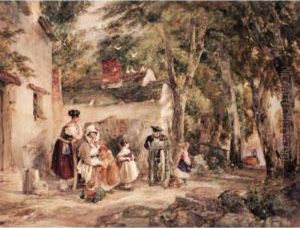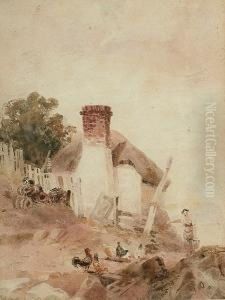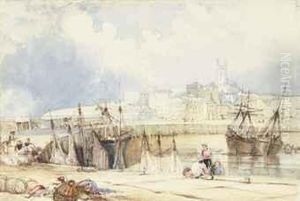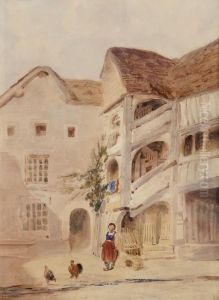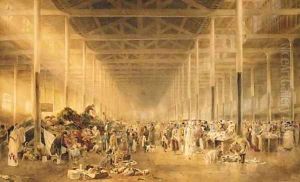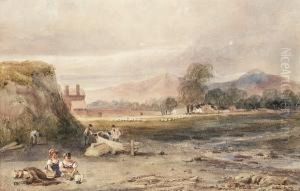Samuel Austin Paintings
Samuel Austin was an English architect during the early 19th century. Born in 1796, Austin is recognized for his work in the Gothic Revival style, which was popular in Britain in the late 18th and early 19th centuries. His architectural career is defined by his contributions to the design of churches, public buildings, and private residences, primarily in the county of Dorset, England.
Austin's education and early career are not extensively documented, but it is known that he was practicing in Dorchester by 1823. He quickly established himself as a respected local architect. One of his significant works is the Dorchester County Gaol, designed in 1824, which reflected the period's penal reform movements with its emphasis on humane conditions.
Through his career, Austin became known for his ability to blend the medieval Gothic elements with the modern needs of his time, creating functional spaces that were also aesthetically pleasing. His approach to Gothic Revival architecture was not purely historical but adapted to contemporary requirements and construction methods.
Austin's contribution to ecclesiastical architecture is perhaps his most lasting legacy. He designed several churches in Dorset, including St. Peter's Church in Dorchester, which was completed after his death. His designs often included richly decorated interiors and exteriors with characteristic Gothic features such as pointed arches, ribbed vaults, and flying buttresses.
Tragically, Samuel Austin's career was cut short when he died at the young age of 38 in 1834. Despite his early death, Austin left behind a legacy that would influence local architecture in Dorset for years to come. His works remain important examples of the Gothic Revival movement in English architecture, reflecting the era's tastes and the evolution of architectural design during the period.

